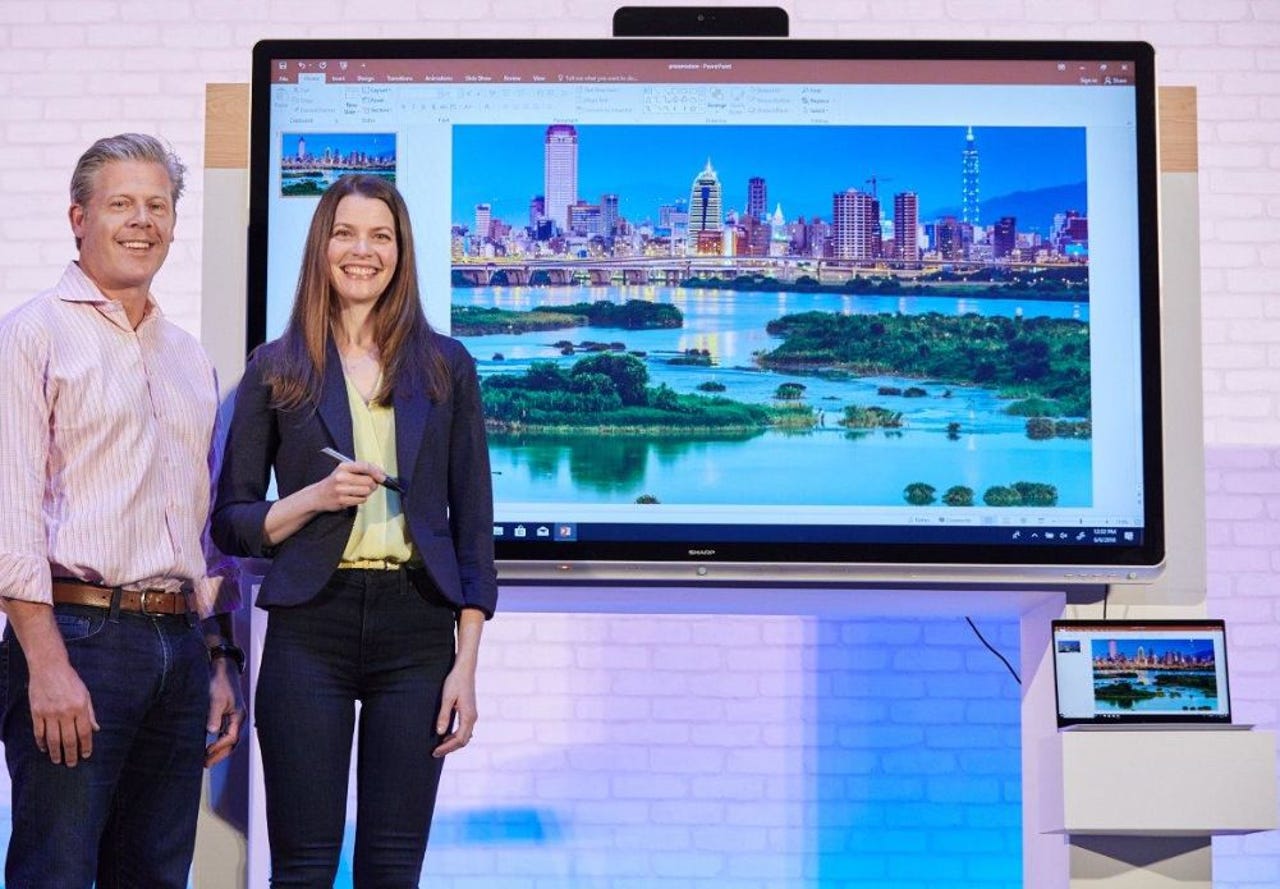Microsoft partners to roll out 'Windows Collaboration Displays' later this year

Microsoft and a couple of its OEM partners introduced "Windows Collaboration Displays" on June 6 at Computex.

What are these devices, exactly? They are not OEM knock-offs of Microsoft's Surface Hub conferencing systems.
Instead, in the words of a spokesperson, they are "non-compute peripherals extending the PC desktop experience to room scale as well as an IoT Edge device with sensors that support Azure IoT spatial intelligence scenario."
"Windows collaboration displays are designed to offer the best experience when connected to a Windows 10 PC or when running Windows 10 from an integrated compute module," the spokesperson said.
The displays' built-in sensors will be able to handle tasks like presence detection, a capability Microsoft showcased at Build 2018 in a demo. And when connected to Azure IoT, users will be able to find available collaboration spaces, and facility managers will be able to use data they collect from those devices.
Microsoft says these Windows Collaboration Displays are an entirely new device category. However, there are a number of Windows-based "collaboration displays which are large-screen conferencing systems, already in market.
The coming generation of Windows Collaboration Devices will run off of Microsoft 365 -- Microsoft's subscription bundle of Windows 10, Office 365 and Enterprise Mobility + Security device management software. Microsoft also said that the Windows Collaboration Display devices will be a good showcase for Microsoft Whiteboard.
Sharp and Avocor, both of which already make some types of Windows-based collaboration displays, will be making new versions of these Windows Collaboration Displays which will be shipping later this year, Microsoft officials said. While pricing is not yet being disclosed, the Microsoft spokesperson told me that there will be "many screen size options and low price points," which should make the devices appealing to education customers.
I asked if Microsoft itself intends to build a peripheral that qualifies as a Windows Collaboration Device, thinking that this could be the standalone Surface monitor that many users have requested. Unsurprisingly, the spokesperson said the company had nothing to share on that front.